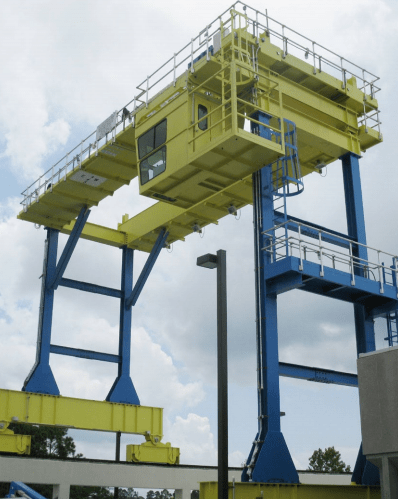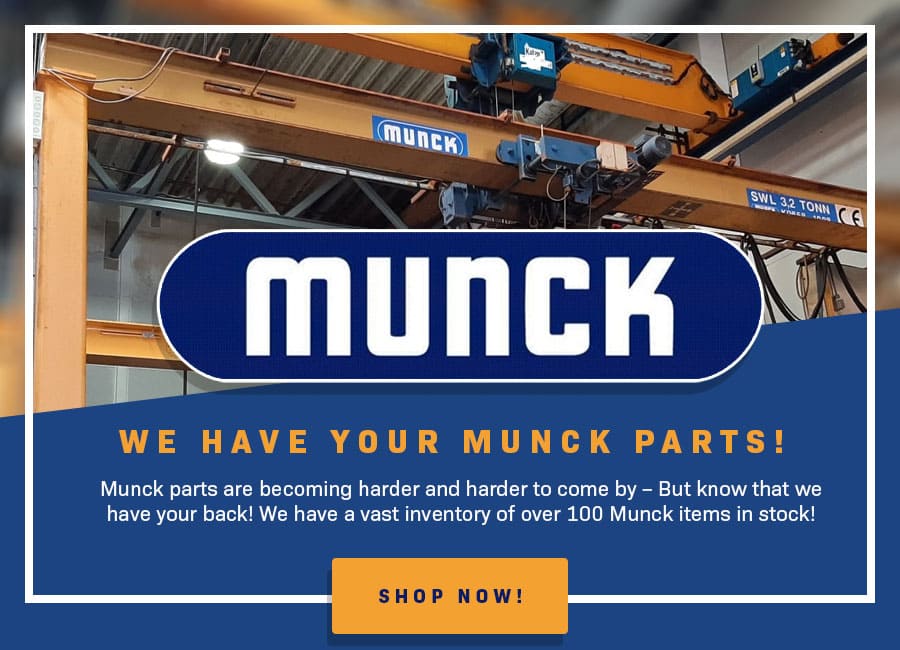When selecting cranes or hoist equipment for use in outdoor environments, it’s important to choose high-quality, reliable solutions that will be able to withstand extreme temperatures and various weather conditions. When machinery can stand up to even the harshest outdoor conditions, users can rest assured that it will operate reliably throughout the entire project.
Selecting the Proper Equipment for Outdoor Crane Applications
 When selecting cranes, hoist equipment, and components for outdoor applications, the following features and parts are recommended to ensure optimal reliability and longevity in harsh conditions.
When selecting cranes, hoist equipment, and components for outdoor applications, the following features and parts are recommended to ensure optimal reliability and longevity in harsh conditions.
- Severe-duty motors with special insulation, fungal protection, and sealed bearings
- Motor strip heaters, stainless steel breather plugs, and corrosion-resistant hardware
- Sealed motor disc brakes, rated IP55 minimum
- NEMA 4X stainless steel electrical enclosures with heaters
- Line voltage transformer for heaters
- NEMA 4-rated limit switches
- Proper lubricant selection, based on temperature extremes inherent in the application at hand
- Sealed cable glands
- Stainless steel hoist wire rope for corrosion resistance
- Three-part painting system for the trolley frame, as follows:
- Surface preparation: SSPC SP10, near-white metal blast
- First coat: Inorganic zinc primer (2-3 mils)
- Second coat: Epoxy intermediate coat (4-6 mils)
- Topcoat: Polyurethane finish coat (3-5 mils)
Conductor systems must also be considered when dealing with outdoor service applications, and UV-resistant covers and corrosion-resistant hardware should be employed. Also, keep in mind that hoist operations must typically be curtailed when wind speeds exceed 35 mph.
Incorporating the features above will allow for a much more resilient material handling system. When deciding on a hoist, crane, or component for a particular outdoor application, it’s imperative to carefully consider each piece of equipment before making a final decision; otherwise, operations, workers, and the surrounding environment are all in danger. Working with ill-suited components greatly increases the risk of equipment damage, employee injuries, and lost productivity. These issues can lead to significant costs in terms of both time and money, and can seriously damage a company’s reputation.
ASME Standards for Cranes Operating in Cold Temperatures
It’s also important to consider the effect of bitterly cold temperatures on material handling equipment. When weighing different hoist options, consider choosing equipment that meets the American Society of Mechanical Engineers’ (ASME’s) temperature standards for proper hoist operation. These standards provide a temperature range for optimal equipment operation, and can be hugely useful in guiding industry professionals toward the best solutions for their specific jobs. Below are three relevant ASME standards for outdoor crane applications.
- ASME HST-2-1999 Performance Standard for Manually Operated Chain Hoists — Hoists and trolleys covered by this standard are intended for industrial use in ambient temperatures from 0 °F to 130 °F.
- ASME HST-1-1999 Performance Standard for Electric Chain Hoists — Hoist equipment is designed to operate in ambient temperatures between 0 °F and 104 °F.
- ASME B30.20 Below the Hook Lifting Devices — Additional considerations need to be taken into account if the working temperature is outside the range of 24 °F to 150 °F.
The Impact of Cold Temperatures on Steel
Cold temperatures can have a serious impact on steel, in turn affecting the working capacity of material handling cranes. When exposed to extreme cold, the structure of steel can shift significantly, going from ductile to brittle as conditions become colder and reach the ductile-to-brittle-transition temperature (DBTT). This shift in structure can have a catastrophic, unpredictable impact on cranes and hoist equipment, greatly affecting their performance. While functionality failure caused by cold weather can occur randomly, it can also be a side effect of other stressors, such as cracks and nicks.
Since temperature can have such serious effects on material handling equipment and its ability to perform properly, it’s essential to select machinery that can not only withstand extreme temperatures but also adhere to the strictest industry standards. In fact, in cold-temperature applications, ASME recommends either derating your crane’s capacity or using steel that is better-suited for operation at lower temperatures.
Learn More
At American Crane, we’re proud to lead the industry in the manufacture of outdoor cranes, hoist equipment, and other material handling equipment. Our experts are well-versed in helping professionals find the right solutions for their unique crane, hoist, and component needs.
To read up on other key factors to keep in mind when choosing an outdoor crane service, download our Technical Notes for Outdoor Service sheet, which outlines important factors to consider when selecting crane and hoist equipment that can withstand temperatures below 0 °F. Or, to discuss your specific needs with an expert, reach out to the team today.





